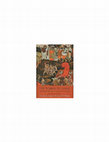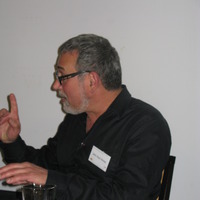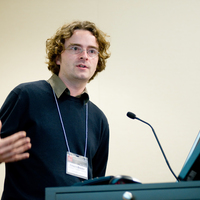Books by John-Paul Himka
This is a classic study on Marxism and the national question, now out of print.
Zakhidno-kanadskyi zbirnyk, 10 (Shevchenko Scientific Society), 2022
Ukrainian Canadian Visual Art features contributions by outstanding Canadian writers and art hist... more Ukrainian Canadian Visual Art features contributions by outstanding Canadian writers and art historians. It also contains interviews with photographers and other visual artists, both established and up-and-coming. The concept of Ukrainian Canadian art is discussed and problematized in the introduction and afterword, with insights strewn throughout the contributions as well. The time frame encompassed is from the early twentieth century to the first decades of the twenty-first.

Icons and murals depicting the biblical scene of the Last Judgment adorned many Eastern-rite chur... more Icons and murals depicting the biblical scene of the Last Judgment adorned many Eastern-rite churches in medieval and early modern Ukraine. Dating from the twelfth to the eighteenth centuries, these images were extraordinarily elaborate, composed of dozens of discrete elements reflecting Byzantine, Novgorodian, Moldavian, and Catholic influences, in addition to local and regional traditions. Over time, the details of the iconography evolved in response to changing cultural resources, the conditions of material life at the time, and new trends in mentality and taste.
The World to Come lists and describes more than eighty Last Judgment images from present-day Ukraine, eastern Slovakia, and southeastern Poland, making it the largest compilation of its kind. Photographs show overviews and details of the images, and most are printed in full color. The icons and murals provide a valuable source of knowledge about the culture in which they were created: what was meant by good and evil, what was prophesied for the future, and what awaited in the afterlife.
Papers by John-Paul Himka
Routledge History of Antisemitism, ed. Mark Weitzman et al. (London: Routledge, 2024), 2024
This surveys antisemitism on the territory of contemporary Ukraine from the early modern period u... more This surveys antisemitism on the territory of contemporary Ukraine from the early modern period until the present.
In Intellectuals and the Articulation of the Nation, ed. Ronald Grigor Suny and Michael D. Kennedy (Ann Arbor: University of Michigan Press, 1999), 109-64., 1999
Today the Galicia region of Ukraine is a bastion of Ukrainian nationalism. But this was hardly an... more Today the Galicia region of Ukraine is a bastion of Ukrainian nationalism. But this was hardly an inevitable outcome of the historical evolution of the East-Slavic inhabitants of Austrian Galicia. This is a study of how nationality was constructed in one corner of the old Habsburg monarchy. It was published some time ago, but upon rereading, I see little in it that I would change. Recently, Diana Dumitru at Georgetown assigned it to her seminar and has asked me to speak to the class. I needed to reread it (after decades of not doing so), and discovered that I did not myself have a copy. I found one online and decided to put it up on academia.edu.
The Carl Beck papers in Russian and East European studies, 1993
Buy the Book Contents List of Illustrations | viii Preface and Acknowledgments | ix Introduction ... more Buy the Book Contents List of Illustrations | viii Preface and Acknowledgments | ix Introduction | 1 john-paul himk a & joanna beata michlic 1. "Our Conscience Is Clean": Albanian Elites and the Memory of the Holocaust in Postsocialist Albania | 25 daniel perez 2. The Invisible Genocide: The Holocaust in Belarus | 59 per anders rudling 3. Contemporary Responses to the Holocaust in Bosnia and Herzegovina | 83 fr ancine friedman 4. Debating the Fate of Bulgarian Jews during World War II | 108 joseph benatov 5. Representations of the Holocaust and Historical Debates in

<p>This chapter sketches the relationships between the three major nationalities of Austria... more <p>This chapter sketches the relationships between the three major nationalities of Austrian Galicia — Poles, Ukrainians, and Jews — with respect to social and political intercourse, religion, and culture. The discussion is restricted to the problem of interaction between these nationalities. Within these limits the chapter presents an account of the Galician triangle. It shows that while three nationalities constituted different socio-economic communities, with different cultural levels and interests, their interactions involved more than mere difference. These were antagonistic societies — communities whose economic interests frequently collided. The main axis of this antagonism was the landlord–peasant relationship. The Polish-style serfdom that existed in Galicia until 1848 was based on the coercion of labour rents from the peasantry. Like any system of forced labour, it depended on the systemic exercise of violence against the labourers and inspired profound hatred of the landlord class among the peasantry.</p>

Nationalities Papers, 2020
Tarik Cyril Amar’s The Paradox of Ukrainian Lviv is well written and researched, published by a p... more Tarik Cyril Amar’s The Paradox of Ukrainian Lviv is well written and researched, published by a premier university press, and conveys to readers the real complexity of Ukrainian history. As such, one may hope it stands a chance to pierce the sound-proof wall that now stands between the critical and mainstream historiography of modern Ukraine. It belongs to the relatively young, critical trend within Ukrainian historiography, joining several other recent monographs that work outside the mainstream, loosely nationalist paradigm, notably Kai Struve’s Deutsche Herrschaft, ukrainischer Nationalismus, antijüdische Gewalt: Der Sommer 1941 in der Westukraine (Berlin: De Gruyter Oldenbourg, 2015) and Grzegorz Rossoliński-Liebe’s Stepan Bandera: The Life and Afterlife of a Ukrainian Nationalist; Fascism, Genocide, and Cult (Stuttgart: Ibidem-Verlag, 2014), as well as numerous articles by a wider circle of authors. So far, the results of the new research have notmade a dent inmainstreamUkrainian studies. For example, Serhii Plokhy’s survey The Gates of Europe: A History of Ukraine (New York: Basic Books, 2015), in discussing the Organization of Ukrainian Nationalists (OUN) during World War II, fails to mention that the organization’s militias were complicit in the wave of anti-Jewish violence that engulfed Western Ukraine in the summer of 1941, even though this has been well documented. (Amar discusses the Lviv pogrom and OUN involvement in it on pp. 93–101.) And Plokhy’s claim that the Bandera faction of the OUN “went overnight from the Germans’ loyal ally to their enemy” (The Gates of Europe, 267) ignores research that shows both that the abandonment of the German alliance was far from instant and that the alliance was pragmatically restored as the Red Army closed in. Amar’s monograph confronts the rather more complicated reality. He shows, on the basis of the transformation of Lviv in the late 1930s and 1940s, that the Nazis, Soviets, and OUN all pursued policies of “ethnic unmixing” (145). And this implies something about the city that is his subject. Lviv, as the informal capital of Western Ukraine, is considered by many to be the most nationally conscious city in the country, the most pro-Western, as well as the most democratically oriented. Yet, as Amar rightly notes in his conclusions, “If Lviv and what it stands for in Ukraine is special, as often claimed, it is rash to assume that it is especially liberal. If it is a window on theWest, thatWest cannot be reduced to civil society, democracy, pluralism, and individualism. In fact, historically, its darker side from fascism and ethnic nationalism to the perversions of Enlightenment rationality that fed into Stalinism, has been at least as important” (319). There is one feature of Amar’s book that particularly deserves highlighting: his sensitive exploration of the meeting of Western and Eastern Ukrainians in 1939–41 and 1944 and after. Emphasis on regional divisions is decidedly out of favor in mainstream analysis of Ukraine, which tends to present the Ukrainian idea, and—I think recklessly—the Ukrainians themselves, as a unity, a coherent whole, sometimes even a monolith. This protestation of unity has become more

Nationalities Papers, 2019
Likewise, if we analyze what took place in the territories of today's Ukraine and Belarus during ... more Likewise, if we analyze what took place in the territories of today's Ukraine and Belarus during the age of the Reformation and Counter-Reformation, we can observe not only a climate of confrontation but also an area of mixed influences and competing trends between Orthodox and Latin culture, which involved not merely parallels with, but the direct influence of, Western European and late-humanistic intellectual trends and patterns of thought. Let me conclude by saying that in the many historic periods, beginning with the birth of Slavic literary culture in the 9th century, it would behoove us to examine what took place and what was believed not only in terms of opposition but also in terms of the amalgams of seemingly conflicting trends that made possible the birth of new trends, from the Cyrillo-Methodian period to the equivocal encounters of "old" and "new" in the early 21st century. In my view, Professor Magocsi's remarkably comprehensive and thorough study devoted to the history of Carpathian Rus' and Carpatho-Rusyns, even with (or perhaps because of) its solid national-patriotic interpretive orientation, is a highly useful step in defense of an envisioned complete Carpatho-Rusyn identity. With Their Backs to the Mountains is, indeed, a most nobly crafted study.
Galician Villagers and the Ukrainian National Movement in the Nineteenth Century, 1988
The inhabitants of East Galician villages were predominantly Ukrainian peasants. Poles, Jews and ... more The inhabitants of East Galician villages were predominantly Ukrainian peasants. Poles, Jews and Germans also lived there, as well as nonpeasant Ukrainians: priests, teachers and cantors. As we have already seen, these Ukrainian notables participated in the rural national movement, accounting for 38.2 to 50.7 per cent of the identifiable correspondents to Batkivshchyna (Table 11) and 20.8 per cent of the officers of the reading clubs (Table 13). Of the activists in our list who have been identified by occupation (357), 53 were priests, 23 teachers and 29 cantors (Appendix V); together they account for 29.4 per cent of the activists.

Galician Villagers and the Ukrainian National Movement in the Nineteenth Century, 1988
Nothing so stamped the character of the Galician countryside as the long experience of serfdom. F... more Nothing so stamped the character of the Galician countryside as the long experience of serfdom. For a hundred years after its abolition in 1848, the basic elements of the Galician village—from landholding arrangements and the layout of buildings to the categories of inhabitants and relations among them—all remained fundamentally as they had taken shape during the previous centuries of serfdom. Even though the national movement did not, and could not, reach the peasantry under serfdom, nothing is as essential to understanding the emancipated peasantry’s embrace of that movement as an understanding of serfdom. It was first in the throes of liberation from serfdom, during the revolution of 1848–9, that peasants entered the national movement and that, as a corollary, the national movement began to enter that crucial second phase in which it developed a mass constituency. Although during the final struggle over the terms of emancipation, the servitudes conflict that dominated the 1850s and 1860s, the national movement was once again largely absent from the countryside, this struggle too contributed to the national movement’s popularity in the village after the 1860s.
Nationalities Papers, 2011
The article concerns debate about the memory of the Holocaust in Ukraine. It covers the period 20... more The article concerns debate about the memory of the Holocaust in Ukraine. It covers the period 2004-2008.

Nationalities Papers, 1994
The concept of “Western Ukraine” is not entirely a static one. As a valid unit of historical anal... more The concept of “Western Ukraine” is not entirely a static one. As a valid unit of historical analysis it first appears in the late eighteenth century, when the Habsburg monarchy added Galicia (1772) and Bukovina (occupied 1774, annexed 1787) to its collection of territories; already part of the collection was the Ukrainian-inhabited region of Transcarpathia (depending on how one counts, it had been Habsburg since as early as 1526 or as late as the early eighteenth century). Of course, one can also read back certain features unifying Western Ukraine prior to the 1770s, such as the culturally formative influence on all three regions of the medieval Rus’ principality, later kingdom, of Galicia and Volhynia, as well as the presence of the Carpathian mountains, which was much more than a matter of mere geology (hence the Russophiles’ preferred name for Western Ukraine—Carpathian Rus'). Still, in the centuries prior to their incorporation into the Habsburg monarchy, the three regions ...
Canadian Institute of Ukrainian Studies Press University of Alberta University of Toronto Edmonto... more Canadian Institute of Ukrainian Studies Press University of Alberta University of Toronto Edmonton, Alberta Toronto, Ontario T6G 2E8 CANADA M5S 1A1 CANADA Copyright © 1994 Canadian Institute of Ukrainian Studies ISBN 0-920862-91-8 Canadian Cataloguing in ...
"Priests and Peasants: The Greek Catholic Pastor and the Ukrainian National Movement in The Greek Catholic Church and Ukrainian Society in Austrian Galicia. Austria, 1867-1900." In , 1986
Discusses the role of the clergy in the Ukrainian national movement in Galicia, its pluses and mi... more Discusses the role of the clergy in the Ukrainian national movement in Galicia, its pluses and minuses.











Uploads
Books by John-Paul Himka
The World to Come lists and describes more than eighty Last Judgment images from present-day Ukraine, eastern Slovakia, and southeastern Poland, making it the largest compilation of its kind. Photographs show overviews and details of the images, and most are printed in full color. The icons and murals provide a valuable source of knowledge about the culture in which they were created: what was meant by good and evil, what was prophesied for the future, and what awaited in the afterlife.
Papers by John-Paul Himka
The World to Come lists and describes more than eighty Last Judgment images from present-day Ukraine, eastern Slovakia, and southeastern Poland, making it the largest compilation of its kind. Photographs show overviews and details of the images, and most are printed in full color. The icons and murals provide a valuable source of knowledge about the culture in which they were created: what was meant by good and evil, what was prophesied for the future, and what awaited in the afterlife.